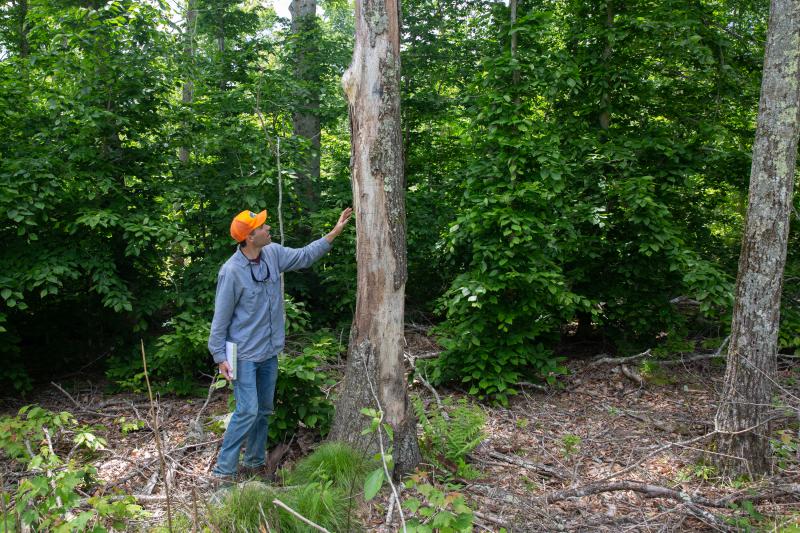Gypsy Moths On The Decline — For Now — But Damage Is Already Done

Forester Dan Evans surveys tree damage following a massive multi-year defoliation caused by gypsy moths in eastern Connecticut. (Patrick Skahill/Connecticut Public Radio)
In recent years, an invasive insect called the gypsy moth has spelled doom for countless New England trees. From 2016 through 2018, it’s estimated gypsy moths defoliated more than 2 million acres in southern New England, which means a lot of cleanup for foresters.
But among all that destruction there is some good news: gypsy moth populations are, finally, declining.
Dan Evans drove a pickup truck down a bumpy road in Connecticut’s biggest state forest. He’s the forester for Pachaug State forest, and he wound his way up a trail that was closed in 2017.
“As we come up Firetower Road you can really start to see the damage in some of the roadside oak trees,” Evans said. “As we drive up the road you’ll certainly notice the fine limb material on the sides of the road falling out of the overhead trees here.”
It’s dead scarlet oak. Killed by gypsy moths. An invasive insect which, in high numbers, can rapidly eat up leaves and kill off trees.
Read the rest of the story at WNPR’s website.
